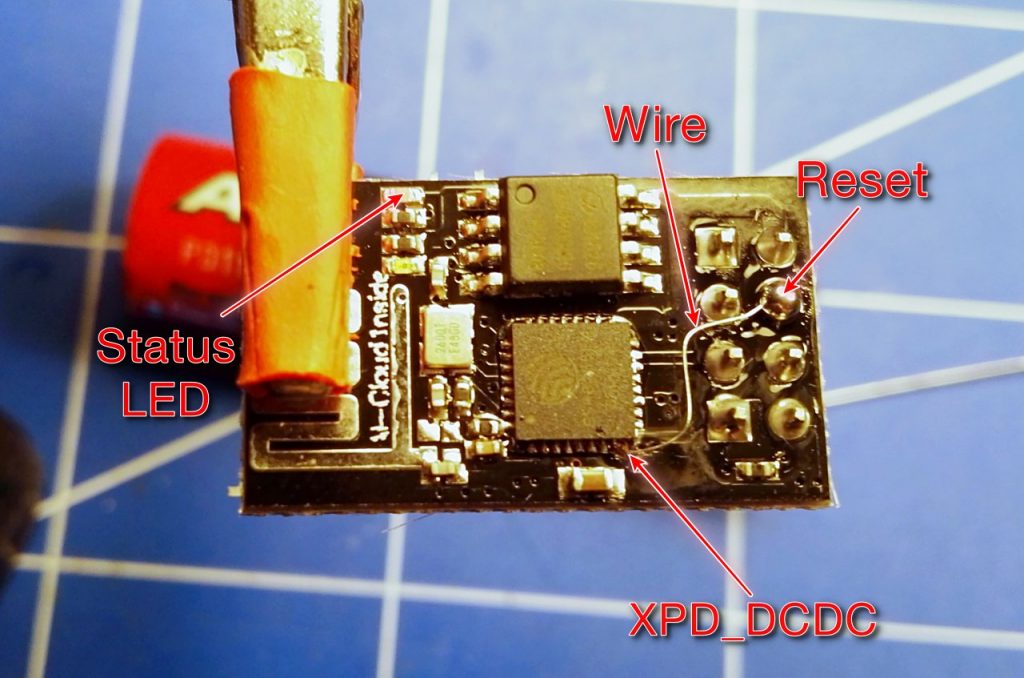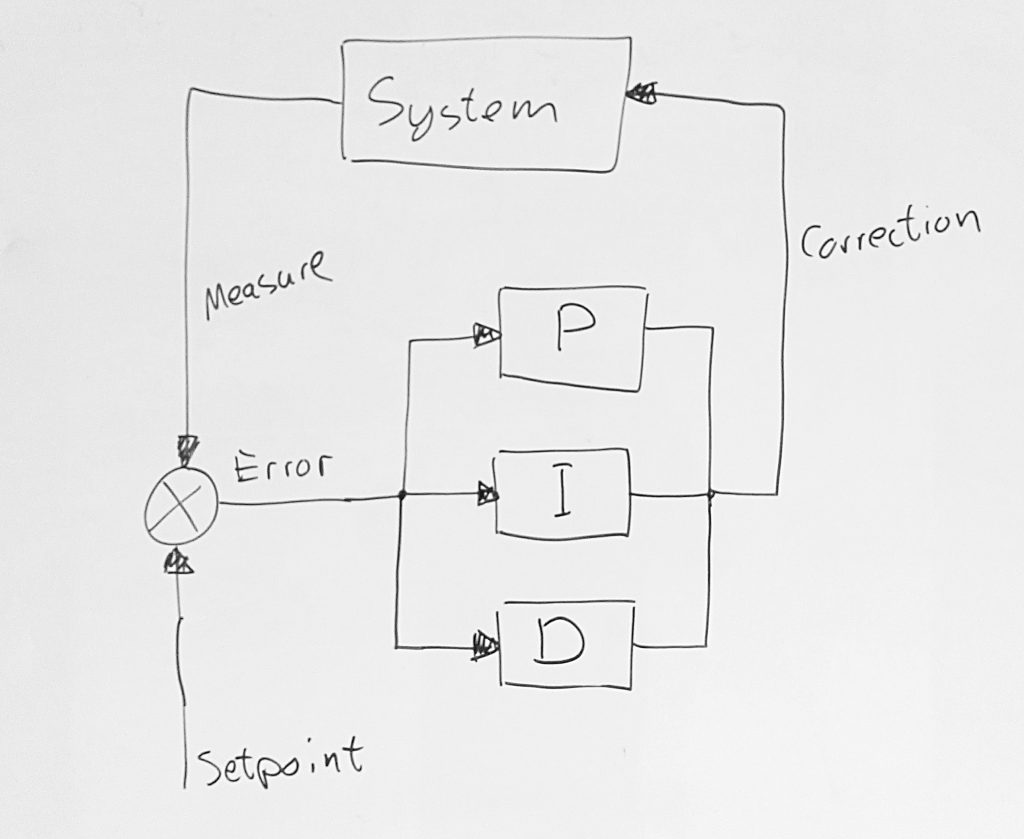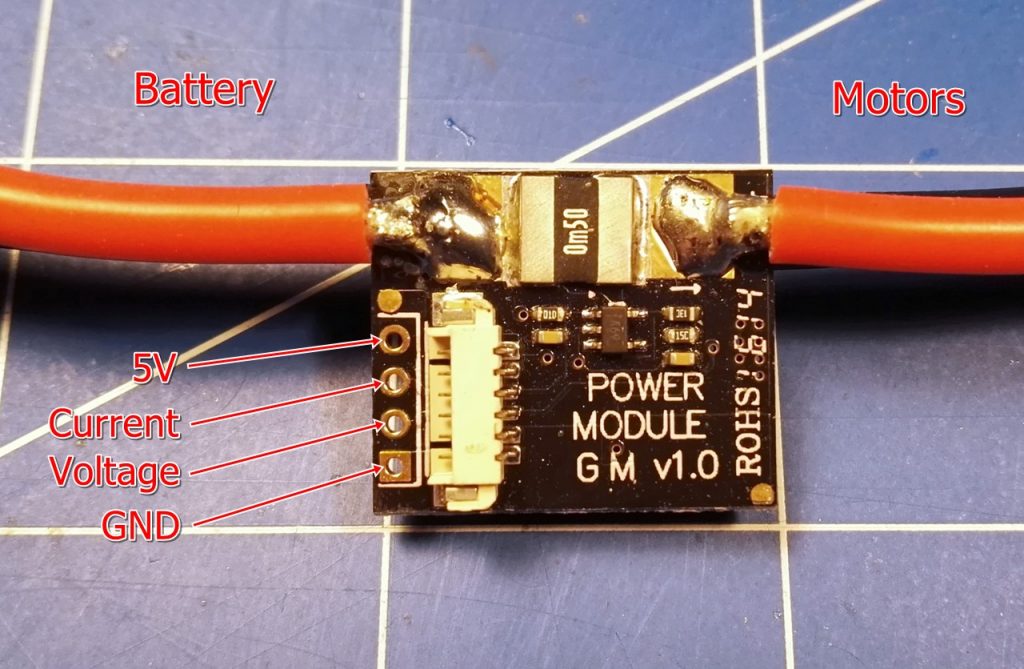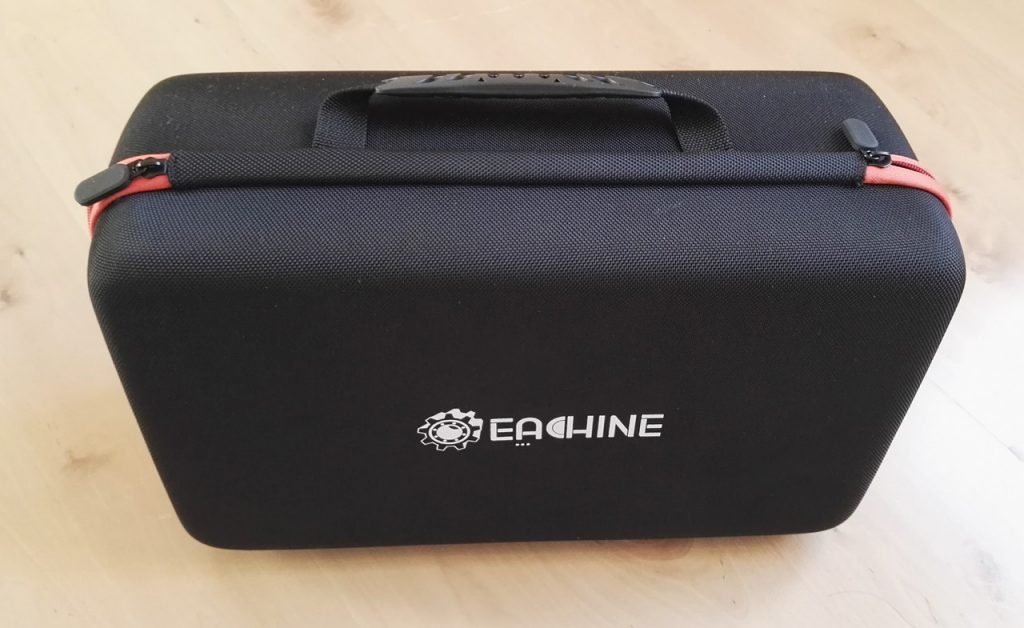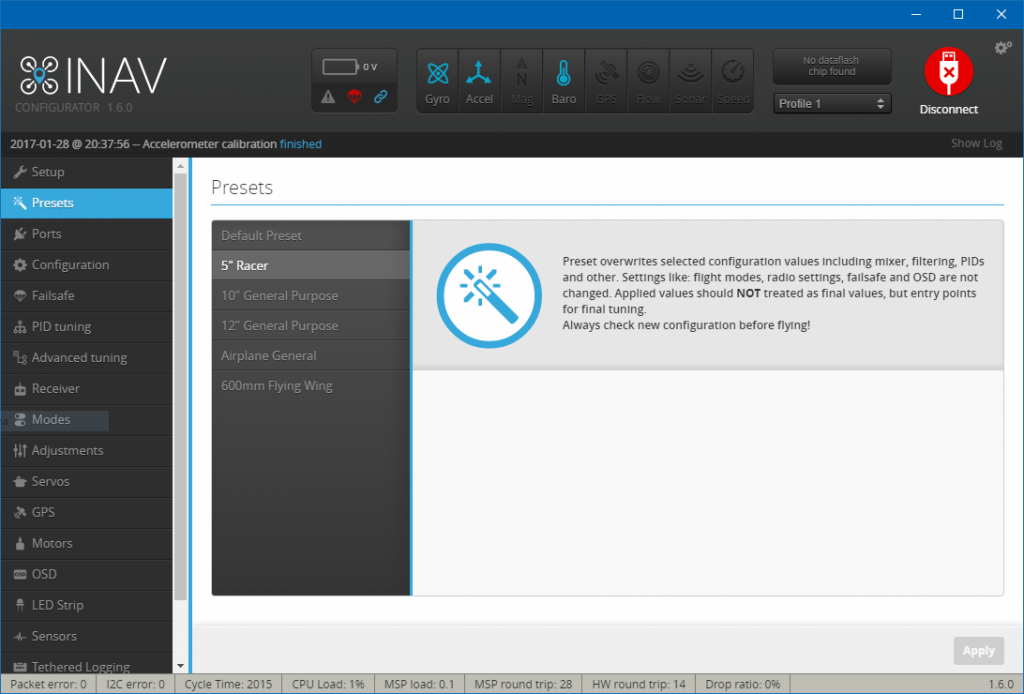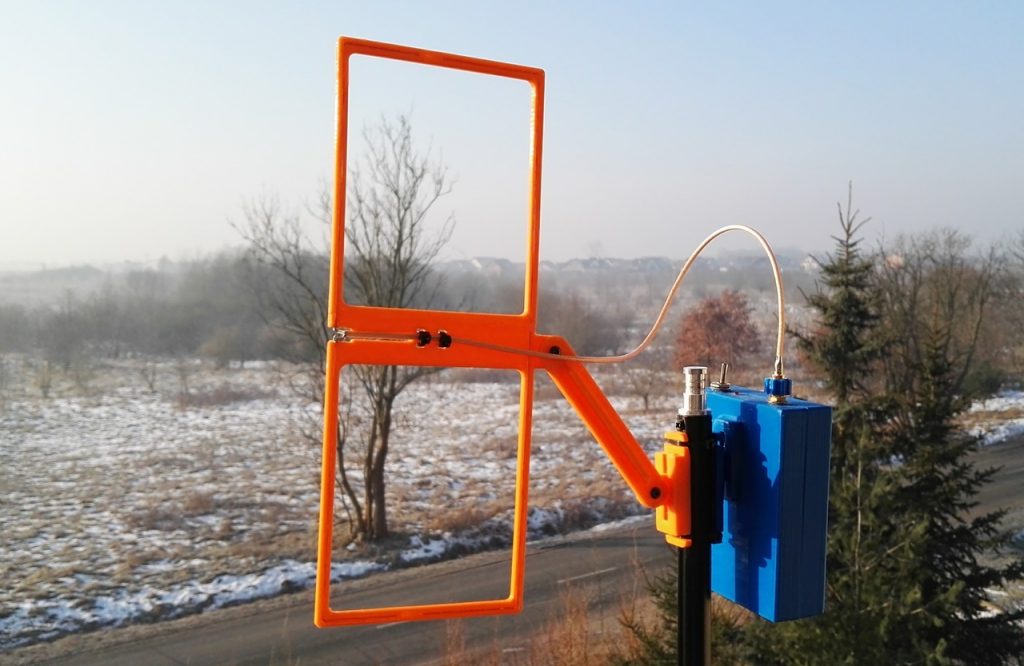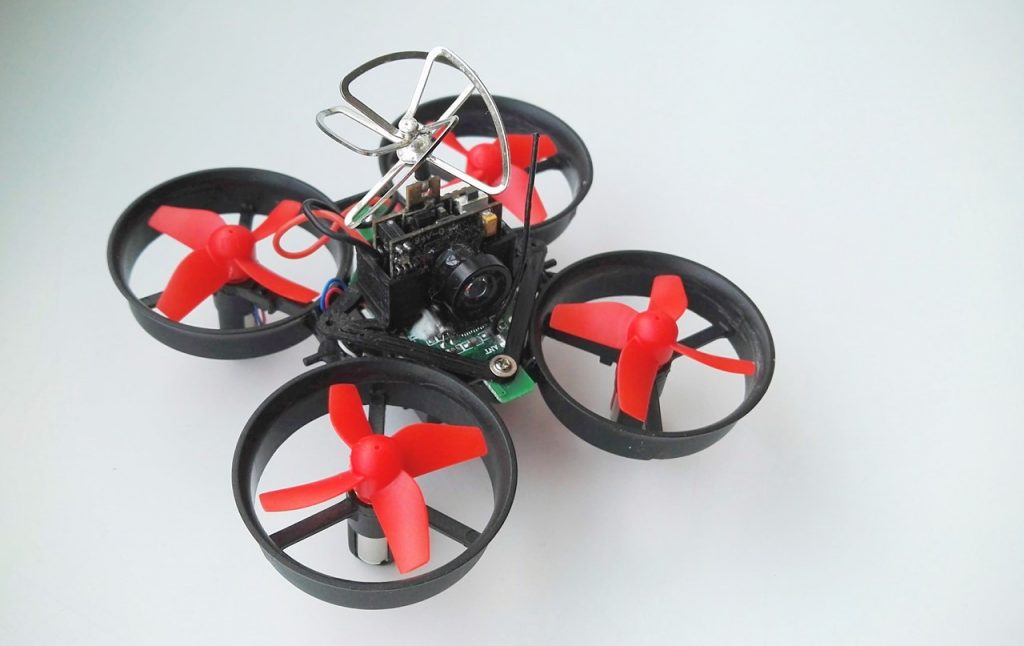-
ESP8266 ESP-01 Low Power Mode - run it for months
Amazing ESP8266 ESP-01 WiFi boards have pretty irritating problem: theirs power consumption is pretty high. Minimal power consumption of about 70mA when doing nothing and above 100mA when when transferring data makes it rather impossible to use it on battery power for a longer period of time. Set of 2 AA batteries would be drained in less than a day. Not good.
There is a way to make ESP-01 work for months using something called
deep sleepmode. When in deep sleep, ESP8266 disables almost all of its functions and reboots after specified period of time. There is one catch: ESP-01 is capable to enter deep sleep, but unable to restart and resume operation. XPD_DCDC MCU pin in not connected to RESET pin. To fix it, you would have to solder thin wire between XPD_DCDC and RESET pin just like on a picture below: -
INAV 1.6: Fixed Wing PIFF Controller
Another new feature of upcoming INAV 1.6 (BTW, INAV 1.6 ALPHA-1 has just been released) is brand new PID controller for fixed wings. I repeat: this new controller is used only on fixed wings, multirotors are not affected.
So, what is new about this new PID controller? First of all, it is no longer a PID (Proportional, Integral, Derivative). It is a PIFF (Proportional, Integral, Feed Forward) controller. What is the difference?
Traditional PID controller computes error between setpoint and measurement and feeds it to 3 modules: P, I and D.
-
How to connect APM Power Meter to Cleanflight and INAV
This topic was eluding me for some time now. It's time fix the problem and finally present a short tutorial how to connect 90A APM Power Meter for flight controller boards like Naza32, SP Racing F3 or any other running Cleanflight / Betaflight / INAV software and equipped with Current Meter ADC input.
I will not show where to connect APM Power Meter to flight controller, since this differs from board to board. Some boards have dedicated pins, on some boards PWM input pins are used for Current Meter ADC. You have to refer FC documentation and / or flight controller software documentation.
-
Hands on: Eachine DIY Suitcase
I like to travel light. Also when going flying. This is why I'm not the biggest fan of all those metal or plastic suitcases. Not my style. I prefer a backpack, mini quadcopter attached on the outside of it, flying wing in one hand, travel chair in the second. Done.
Sometimes suitcases becomes handy (after all they provide some privacy and protection), so when I saw this little Eachine DIY Suitcase I've decided to give it a try. Description says that it can hold ZMR250, so also should not have any problems with 220 mini quad. It does have a problem after all...
-
INAV Configurator 1.6: Presets
Upcoming INAV 1.6, and INAV Configurator 1.6 will bring many important changes. I will try to cover most of them in a next few days, beginning with Presets.
Because INAV can run very wide spectrum of aircrafts, it suffers a penalty of very general default values. Different frame sizes, propellers, multirotors, airplanes, flying wings. It is impossible to have one set of default values that will make all those different UAVs fly good right after flashing. And it's not only about PIDs. Also rates, filters and other settings differs between them. Good default tune for 5" racer will not work on 1.2m flying wing or 1.6kg quadcopter on 12" propellers.
To solve this problem, INAV Configurator 1.6 introduces new tab: Presets.
-
3D Printed 433MHz Moxon Antenna With Arm And Snap Mount
It's still middle of winter here in northern hemisphere, but I'm slowly preparing for next flying season. One of my goals is to push my DIY HC-12 Telelemetry System to a next level. In both range and quality. For quality I'm planning small hardware LTM decoder with LCD. For range, I want to reach at least 1.5km with 9600bps FU3 mode and 2.5km with 1200bps FU4 mode.
-
JavaScript PID controller
I suppose this is the first time programing topic came up on this blog. Probably not the last time, since this is what I do most of the time.
While working on serial port usage balancing for INAV Configurator I've quite accidentally created a PID controller in JavaScript. Maybe it's not the most advanced PID controller ever, but has all the things required:
- computes P-term
- computes I-term
- computes D-term
- has output limiting
- has I-term accumulator limiting
-
Cleanflight, what is up with you?
Those are my personal thought on the topic. If you do not aggree, it is fine, I will not argue or discuss. You have a right you your oppinion, I have a right to mine...
When I entered multirotor hobby about 2 years ago, Cleanflight was The Flight Controller software to get. OpenPilot was about to die, just like BaseFlight. Or maybe even BaseFlight was already dead... never mind.
Bottom line was that Cleanflight was it: fast realease cycle, great support, great community. Everything was just better there.
Then, somewhere in second half of 2015 it started to change. You do not remember what happened in the second part of 2015? It is more less the time when both Betaflight and INAV (both are forks of Cleanflight just like Cleanflight was the fork of BaseFlight) started to appear. I remember narration behind both of those projects: we will rewrite some code, make it fly better with racers (Betaflight) and handle GPS better (INAV) and when this is done, it will be merged back to Cleanflight. Read more...
-
How-to: Eachine E010 Tiny Whoop
It's not easy to fly FPV during winter weather. You either have to have weather proof quadcopter (airplane) or fly indoors. And it's not simple to find a good, big and cheap place to fly FPV in. But, how about flying FPV in a living room?
-
Programming ESP8266 with Arduino IDE
One of the best things about ESP8266 ESP-01 WiFi modules is that they can be programmed
using popular and well known Arduino IDE and act as stand alone board with WiFi
capabilities. Thanks to ESP8266 group process of integrating ESP8266 and Arduino IDE
is pretty simple.First step is to add
http://arduino.esp8266.com/stable/package_esp8266com_index.jsonto Additional Boards Manager URLs in Configuration in Arduino IDE.

I'm Paweł Spychalski and I do things. Mainly software development, FPV drones and amateur cinematography. Here are my YouTube channels:

